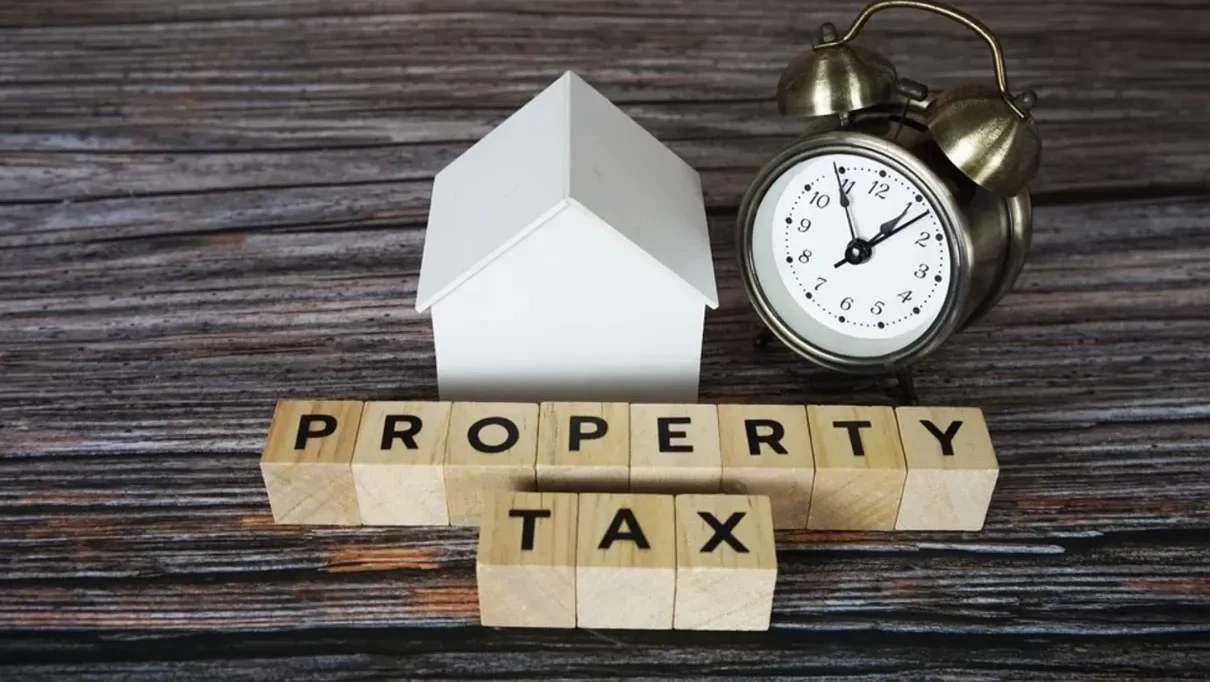
Property taxes are a major expense for homeowners, business owners, and real estate investors, determined by the assessed value of your property as set by your county appraisal district. These districts, also known as appraisal districts or tax assessor-collector offices in some areas, are responsible for valuing properties, processing exemptions, and handling tax protests. Understanding how to navigate your appraisal district is essential for ensuring your property is fairly assessed, claiming eligible exemptions, and successfully appealing an overvaluation. Mistakes or missed deadlines can lead to overpaying taxes by hundreds or thousands of dollars annually. This comprehensive guide provides actionable steps and tips to help you interact effectively with your county appraisal district, empowering you to manage your property taxes and potentially save money.
What Is a County Appraisal District?
A county appraisal district is a government entity tasked with appraising properties within its jurisdiction to determine their taxable value. These valuations form the basis for property tax bills issued by local taxing entities, such as school districts, cities, and counties. The district’s key functions include:
- Property Valuation: Estimating the market value of properties, typically as of January 1 each year, using mass appraisal techniques.
- Exemption Processing: Administering tax exemptions, such as homestead, senior, disabled veteran, or agricultural exemptions.
- Protest Handling: Managing property tax appeals (protests) through informal reviews and formal Appraisal Review Board (ARB) hearings.
- Record Maintenance: Keeping detailed records of property characteristics, ownership, and sales data.
Each state organizes appraisal districts differently. For example, Texas has centralized county appraisal districts, while California uses county assessor offices, and some states combine assessment with tax collection. This guide focuses on general principles, with tips for adapting to your local system.
Why Navigating the Appraisal District Matters
Interacting effectively with your appraisal district can:
- Prevent Overpayment: Correcting an inflated assessment can save significant money. For example, lowering a $400,000 assessment by $40,000 at a 2.5% tax rate saves $1,000 annually.
- Secure Exemptions: Claiming a homestead exemption might reduce your taxable value by $25,000–$50,000, depending on your state.
- Simplify Appeals: Understanding deadlines, forms, and evidence requirements increases your chances of a successful protest.
- Ensure Fairness: Verifying property records prevents errors like incorrect square footage, which can inflate your taxes.
Failing to engage with the district—missing deadlines, ignoring notices, or misunderstanding procedures—can lock in an unfair tax bill. This guide outlines how to navigate the district’s processes confidently.
Key Steps to Navigate Your County Appraisal District
Follow these steps to interact with your appraisal district effectively:
1. Understand Your Appraisal Notice
- What It Is: An annual notice (typically mailed in spring) detailing your property’s assessed value, proposed taxes, exemptions, and protest deadlines.
- Why It Matters: The notice is your first opportunity to spot errors, claim exemptions, or plan a protest if the value seems too high.
- How to Review It:
- Check the assessed value against recent sales of similar properties (comps) or your estimate of market value.
- Verify property details (e.g., square footage, bedrooms, year built) for accuracy.
- Confirm exemptions applied (e.g., homestead, senior) and note any missing ones.
- Note the protest deadline, typically May 15 or 30–45 days from the notice date.
- Example: If your home is assessed at $450,000 but similar homes sold for $410,000, prepare to protest the $40,000 overvaluation.
Tip: Save a copy of the notice and set a calendar reminder for the protest deadline.
2. Access the Appraisal District’s Website
- What It Offers: Most districts provide online tools to:
- View your property’s record (size, features, exemptions).
- Search assessments of similar properties for unequal appraisal arguments.
- Access protest forms, deadlines, and filing instructions.
- Check sales data or valuation methods used by the district.
- How to Use It:
- Search for your property by address or parcel ID to review details.
- Download forms for protests or exemptions (e.g., homestead application).
- Explore FAQs or guides on the protest process.
- Example: Using the district’s database, you find five similar homes assessed at $390,000 vs. your $430,000, supporting an unequal appraisal protest.
Tip: Bookmark the website and check it annually for updates, as deadlines and forms may change.
3. Verify Property Records
- What to Check: Ensure the district’s records accurately reflect your property’s:
- Square footage (living area, not total under roof).
- Lot size.
- Number of bedrooms, bathrooms, and other features.
- Year built and condition (e.g., outdated vs. renovated).
- Why It Matters: Errors like an overstated 2,500 sq ft vs. your actual 2,300 sq ft can inflate your assessment.
- How to Correct Errors:
- Gather proof (e.g., blueprints, deeds, or a survey).
- Contact the district by phone, email, or in person to request a correction.
- Include corrections in your protest if unresolved before the deadline.
- Example: Correcting a 200-square-foot overstatement at $150 per square foot could reduce your value by $30,000.
Tip: Measure your home or hire a surveyor for disputed measurements to strengthen your case.
4. Claim Eligible Exemptions
- What They Are: Tax breaks that reduce your taxable value, such as:
- Homestead Exemption: Lowers the value for primary residences (e.g., $25,000–$50,000 off in many states).
- Senior Exemption: Additional relief for homeowners over 65.
- Disabled Veteran Exemption: Partial or full exemptions for qualifying veterans.
- Agricultural Exemption: Reduced valuations for qualifying farmland.
- Why It Matters: Exemptions can save hundreds annually but must be applied for, often with deadlines.
- How to Apply:
- Check the district’s website for eligibility and forms.
- Submit applications with required documents (e.g., proof of residency, veteran status).
- File by the deadline, often April 30 or with your protest.
- Example: A $50,000 homestead exemption on a $400,000 home at a 2.5% tax rate saves $1,250 yearly.
Tip: Apply for exemptions as soon as you’re eligible (e.g., after buying a home) to avoid missing savings.
5. File a Property Tax Protest
- What It Is: A formal challenge to your assessed value, handled through an informal review with an appraiser or a formal ARB hearing.
- Why It Matters: Protests can correct overvaluations, saving money if supported by evidence like comps or condition issues.
- How to File:
- Obtain the Form: Download the protest form from the district’s website or request it by mail.
- Select Grounds: Common grounds include “value is too high” (market value appeal) or “unequal appraisal” (higher than similar properties).
- Submit by Deadline: File by May 15 or within 30–45 days of the notice, typically online, by mail, or in person.
- Pay Fees if Required: Some districts charge a small filing fee (e.g., $10–$50), waived if you win.
- Example: Filing a protest for a $420,000 assessment, citing comps at $390,000, leads to a $30,000 reduction, saving $750 at a 2.5% tax rate.
Tip: File even if your evidence isn’t perfect, as you can refine it before the hearing.
6. Gather Evidence for Your Protest
- Key Evidence Types:
- Comparable Sales (Comps): Recent sales of similar properties at lower values (see our blog post, “The Role of Comparable Sales in Property Tax Appeals”).
- Property Condition: Photos and repair estimates for issues like a leaky roof or outdated systems.
- Unequal Appraisal: Assessments of similar properties with lower values.
- Market Trends: Data showing declining local prices.
- How to Collect:
- Use the district’s database for comps and assessments.
- Access county sales records or work with a realtor for MLS data.
- Take timestamped photos and get contractor estimates for condition issues.
- Example: Three comps sold for $395,000–$405,000, plus photos of a $10,000 foundation repair, support a $400,000 value vs. your $440,000 assessment.
Tip: Organize evidence in a binder with a summary, tables, and visuals (e.g., maps, charts) for clarity.
7. Prepare for Informal and Formal Reviews
- Informal Review:
- Meet with an appraiser (in person, by phone, or online) to present your evidence.
- Be concise, focusing on your strongest comps or errors.
- Negotiate politely; many protests are resolved here.
- Formal ARB Hearing:
- Present your case to an independent panel (15–30 minutes).
- Summarize your evidence in 5–7 minutes, using visuals like comp tables.
- Answer questions calmly, sticking to data (e.g., “My comps show a $400,000 value”).
- Bring extra copies of your evidence packet.
- Example: At an informal review, your comps convince the appraiser to lower your value from $450,000 to $415,000, avoiding a formal hearing.
Tip: Practice your presentation and anticipate questions like “Why are these comps relevant?” or “How recent are your sales?”
8. Follow Up After the Protest
- What to Expect: You’ll receive a decision letter (mailed or online) detailing the outcome.
- If Successful: Your tax bill reflects the reduced value, and future assessments may start lower.
- If Denied: Consider further appeals, such as binding arbitration or district court (check state rules), or refile next year with stronger evidence.
- How to Follow Up:
- Verify the new value on the district’s website or tax bill.
- Contact the district with questions or errors in the decision.
- Save your evidence for future protests, as issues may recur.
- Example: After a $30,000 reduction, you check the district’s portal to confirm the new $410,000 value is applied.
Tip: If denied, ask for feedback on why to improve next year’s protest.
9. Consider Professional Help
- When to Hire:
- High-value properties with large potential savings.
- Complex cases (e.g., commercial properties, unique homes).
- Lack of time or expertise to gather evidence and present.
- Options:
- Property Tax Consultant: Handles protests, often on contingency (30–50% of savings). See our blog post, “How to Choose the Right Property Tax Consultant.”
- Independent Appraiser: Provides a professional valuation ($300–$600) for strong evidence.
- Example: A consultant uses MLS comps to reduce a $1M commercial property by $100,000, saving $2,500 annually, with a $1,000 fee.
Tip: Weigh professional costs against savings; a $500 fee is worth it for $2,000 yearly savings.
Common Mistakes to Avoid
- Missing Deadlines: File protests and exemption applications on time, as extensions are rare.
- Ignoring Notices: Review your appraisal notice promptly to spot errors or high values.
- Using Weak Evidence: Avoid old comps, unverified data (e.g., Zillow), or emotional arguments.
- Not Verifying Records: Uncorrected errors (e.g., extra bedrooms) inflate future assessments.
- Skipping Exemptions: Failing to claim a homestead exemption can cost hundreds annually.
- Poor Preparation: Disorganized evidence or unprepared presentations reduce your chances.
Real-World Example
Consider Sarah, a homeowner whose property is assessed at $460,000, but she believes it’s worth $420,000. She navigates her appraisal district as follows:
- Reviews Notice: Spots a $460,000 value, higher than recent sales, and notes the May 15 protest deadline.
- Checks Website: Finds her property listed with an incorrect 2,600 sq ft (actual: 2,400 sq ft) and downloads a protest form.
- Gathers Evidence: Collects three comps sold for $415,000–$425,000, a $10,000 HVAC repair estimate, and five similar homes assessed at $410,000–$420,000.
- Files Protest: Submits the form online by May 10, citing market value and unequal appraisal.
- Informal Review: Presents comps and the square footage error, securing a $40,000 reduction to $420,000, saving $1,000 at a 2.5% tax rate.
- Follows Up: Confirms the new value on the district’s portal and applies for a homestead exemption, saving an additional $625.
Sarah’s proactive navigation avoids overpayment and sets her up for future savings.
Why Navigating the Appraisal District Is Worth It
Understanding your appraisal district’s processes empowers you to:
- Correct overvaluations, saving money year after year.
- Claim exemptions that reduce your taxable value.
- Build strong appeals with district-provided data (e.g., comps, assessments).
- Avoid errors that inflate taxes, such as outdated records.
Even a modest reduction or exemption can yield significant long-term savings, especially as property values rise. Conversely, ignoring the district’s processes risks overpaying and missing opportunities.
Taking the First Step
Start by reviewing your latest appraisal notice for errors, high values, or missing exemptions. Visit your county appraisal district’s website to verify property records, explore sales data, and download protest or exemption forms. Contact the district with questions, gather evidence like comps or repair estimates, and file any protests or applications by the deadline. For complex cases, consider a property tax consultant to streamline the process and maximize savings.
For specific details, search online for “[Your County] Appraisal District” or contact their office for forms, deadlines, and resources. Take control of your property taxes today with this guide to navigating your appraisal district.
Disclaimer: Property tax laws and procedures vary by state and county. Always verify local rules with your appraisal district or a qualified professional. This guide is for informational purposes and does not constitute legal advice.
You Might Also Like
Popular Categories
Popular News

Frisco
Frisco Approves Maximum Homestead Exemption to Boost Property Tax Relief July 2, 2025
Collin County News
Over 315 Homes Sold in McKinney in May: Real Estate Snapshot July 2, 2025
Flower Mound - Highland Village - Argyle
Planned Power Outage Scheduled June 30 for Parts of Argyle June 30, 2025
Grapevine - Colleyville - Southlake
🚨 Southlake Approves $27 Million in Contracts for New Service Center & Public Safety Tower June 27, 2025
Collin County News
Celina Explores Expansion with 125 New Homes in “Glen at Uptown” June 27, 2025
Collin County News
Texas Voters to Decide on Three New Property Tax Exemptions This November June 25, 2025
Collin County News
ERCOT Forecasts Record Electric Demand as Texas Braces for Scorching Summer June 25, 2025
Collin County News
Collin County Switches to Hand‑Marked Paper Ballots for November June 23, 2025










